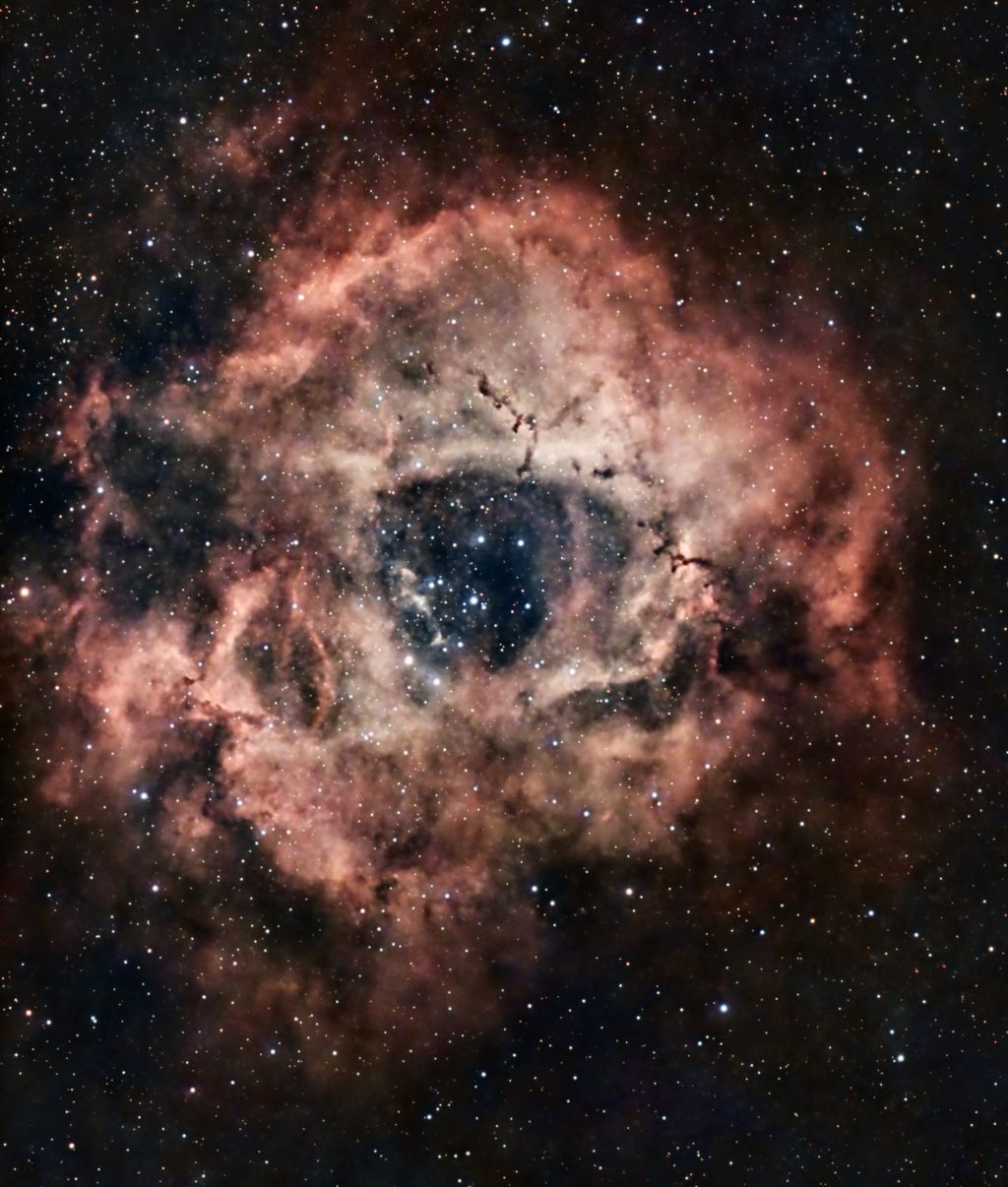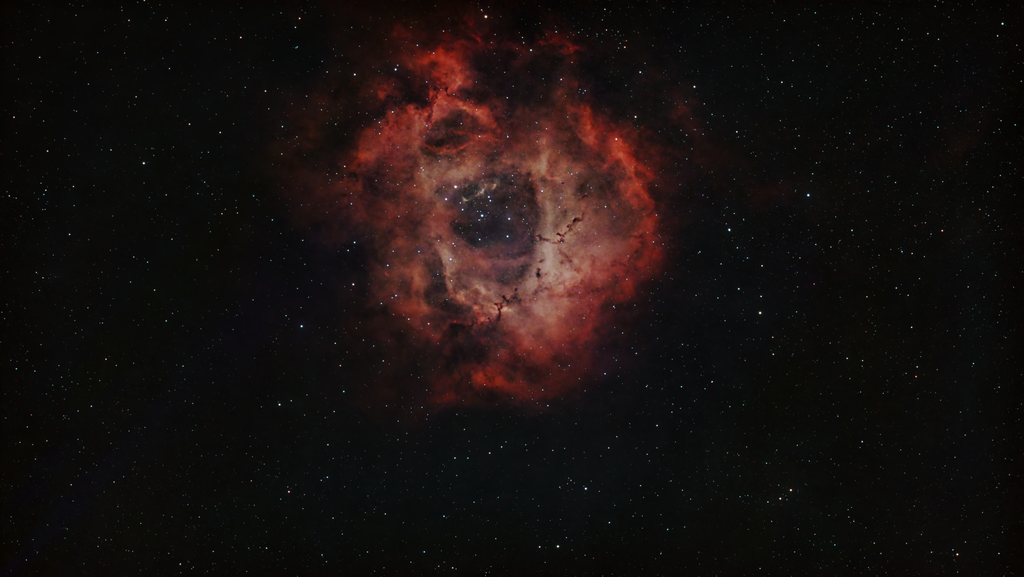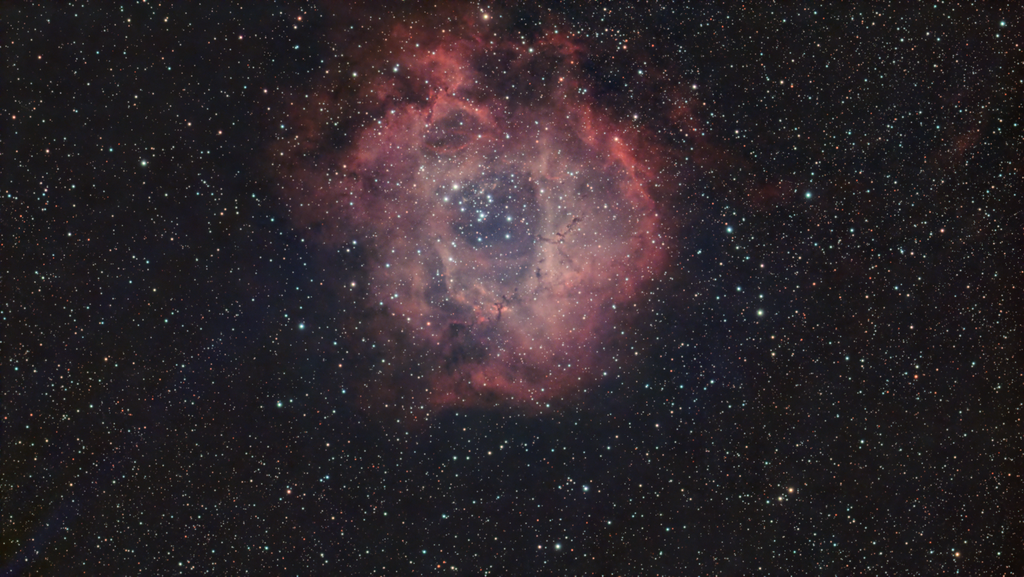I think your attempt is quite good. I took your stacked image and did the following processing on it:
0) Ran Channel Separation and then LinearFit to remove the green cast contained within the image.
1) Ran BlurXTerminator - Correct only to improve the performance of ImageSolver
2) Ran ImageSolver to Plate Solve the image (130mm and 2.9um pixels) Focal distance ........... 259.95 mm Pixel size ............... 2.90 um Field of view ............ 3d 25' 33.7" x 1d 55' 44.6" Image center ............. RA: 6 30 56.410 Dec: +5 02 18.19
3) Ran SpectroPhotometricFluxCalibration (a requirement to applied the MultiSpectralGradientCorrection tool with the MARS database for background correction)
4) Ran MultiSpectralGradientCorrection to cleanup the gradients within the image.
The stacked image seems to show you are dealing with considerable light pollution as well as your image has a fair amount of vignetting (Do you calibrate with Bias, Darks
and Flats?
5) Ran PhotometricColorCalibration to get a realistic color calibration using the 2000 plus stars within the image.
6) Ran BlurXTerminator again to make stellar and non-stellar adjustments
7) Ran StarXTerminator to make a star only image and a background only image.
8) Ran NoiseXTerminator on the Background image
9) Ran GradientCorrection with defaults and Automatic Convergence checked.
10) Ran HistogramTransformation on the stars image - not too much just enough stretching to start to bring out the dimmer stars
10) Ran SCRN on the stars image to remove any remaining green
11) Ran curves on the stars image to increase color saturation of the stars
12) Ran Convolution on the stars image to blur them just a bit (Standard Deviation of 1) as the faint ones were just a few pixels and looked blocky
13) Ran HistogramTransformation on the Background Image to stretch it
14) Ran ACDNR to reduce noise in the background image
14) Ran Curves to reduce the background noise and increase the brightness of the nebula and increase color saturation
15) Ran LocalHistogramEqualization (100, 1.3 and 0.6)
Finally, ran pixelmath to combine the stars image with the background image "~((~BackgroundImageName)*(~StarsImageName))
Here is the result

I think the color is more natural and shows more of the OIII green and blue mixed with the Ha red than your original image. I find processing the nebula separated from the stars works the best
This image is aligned and cropped the same as your original image so you can compare. Good luck, your images are off to a great start - just keep working on them and learning to do better each time
Michael






